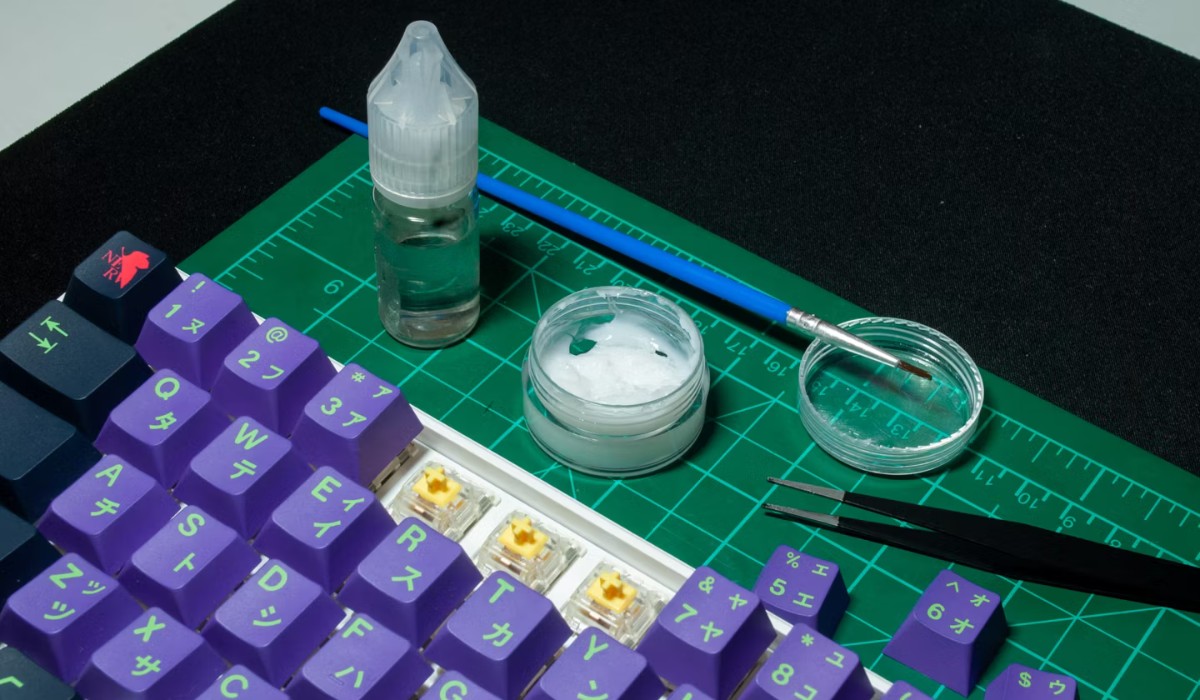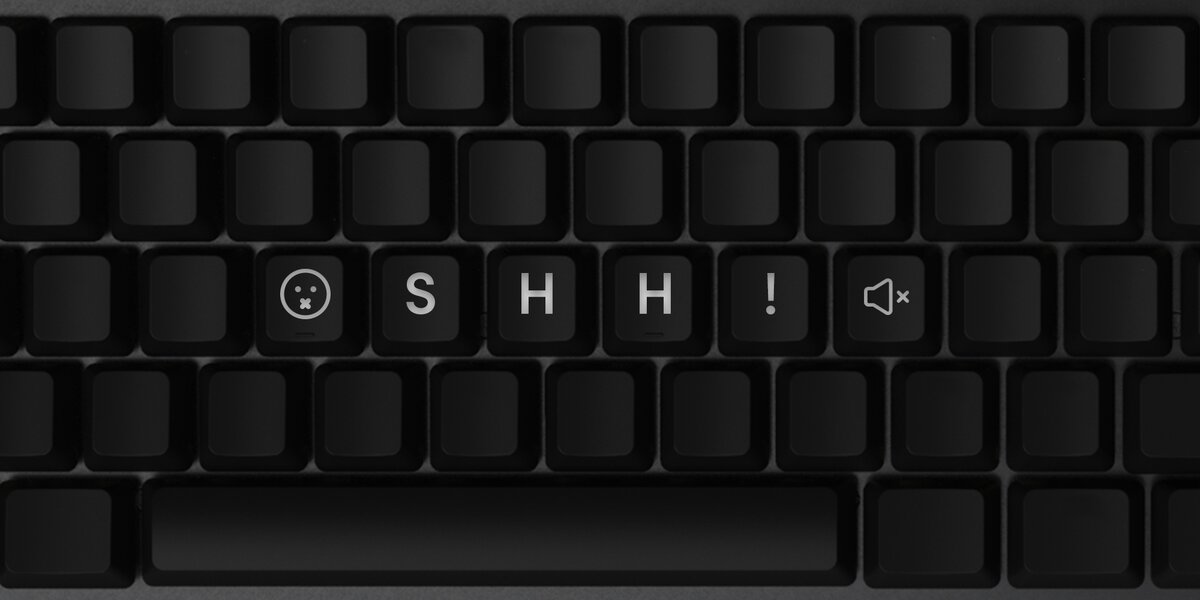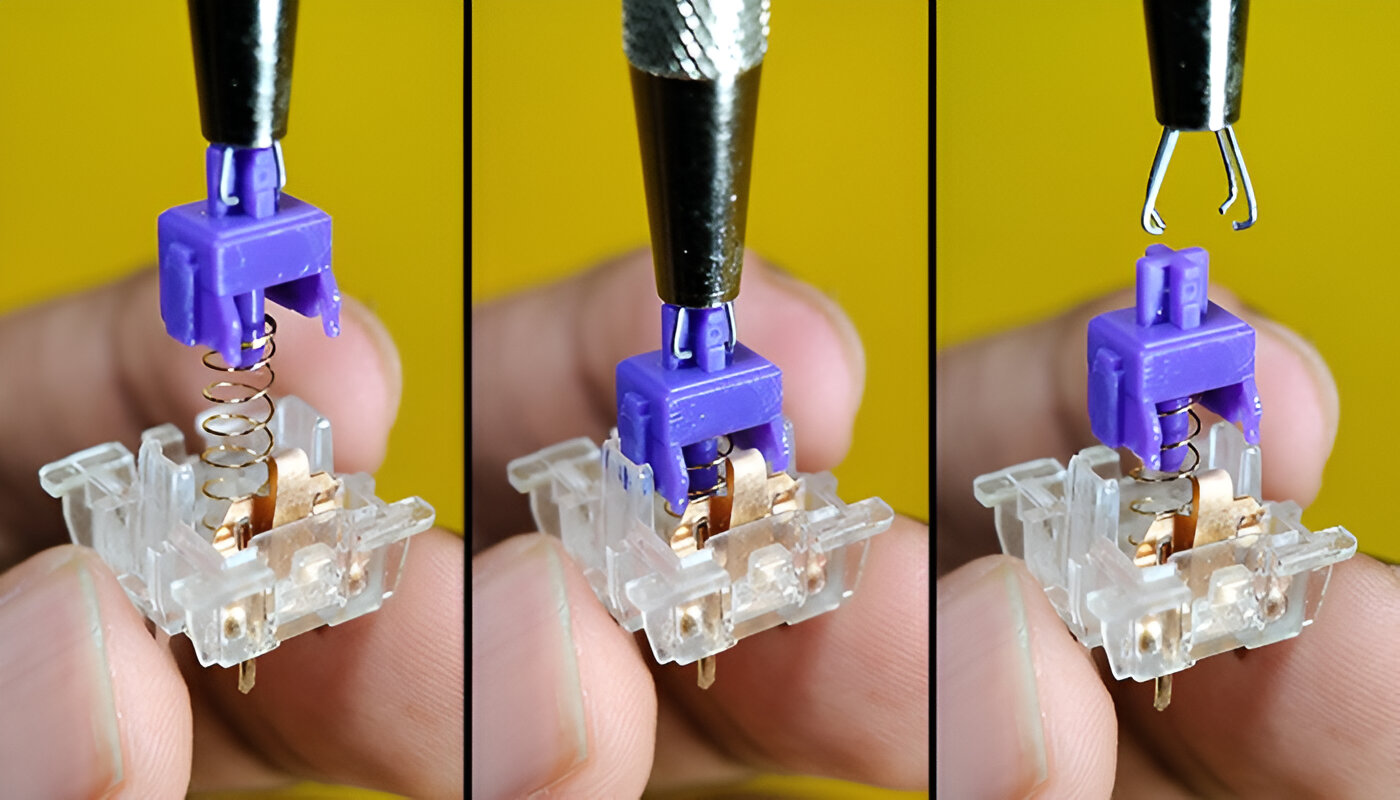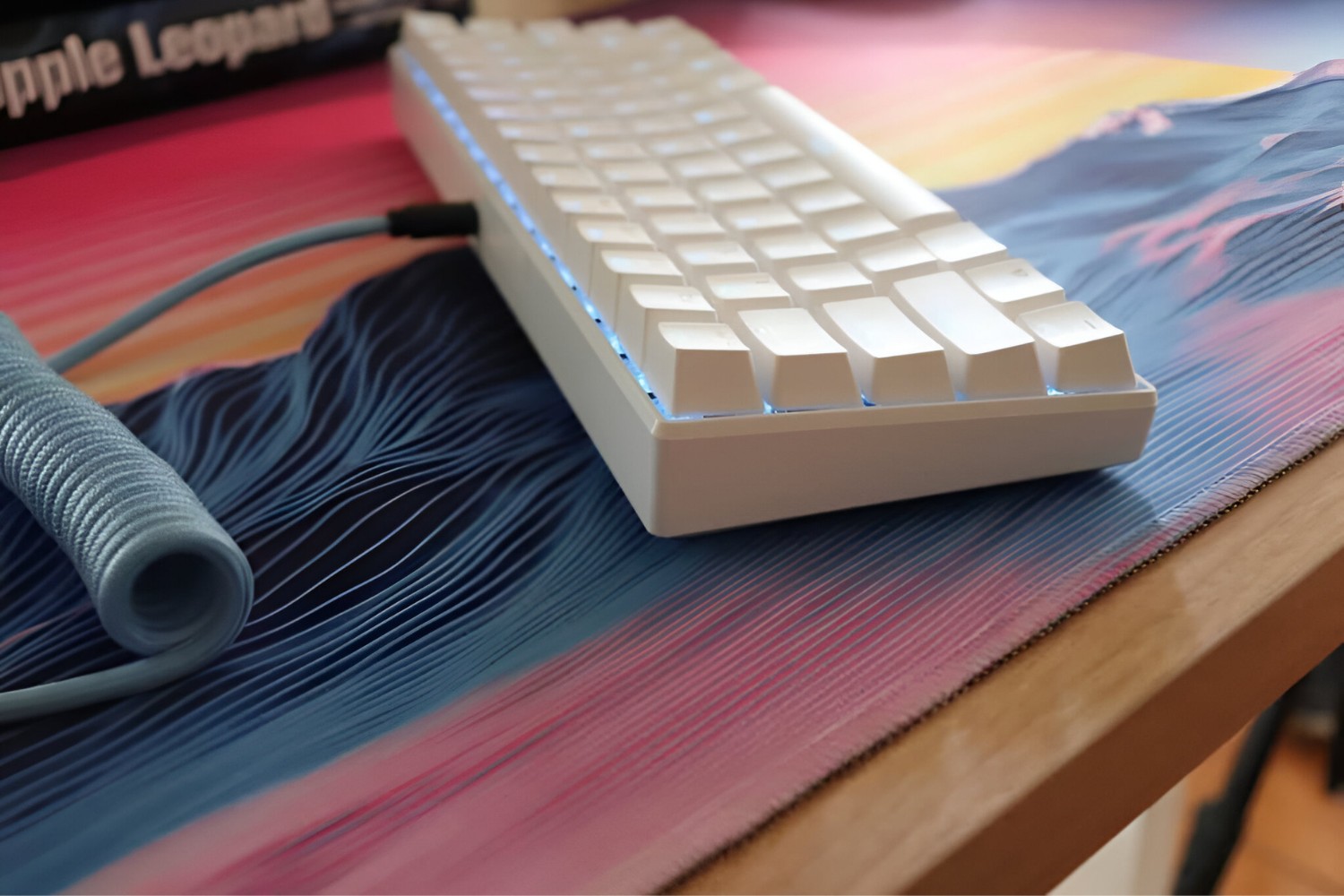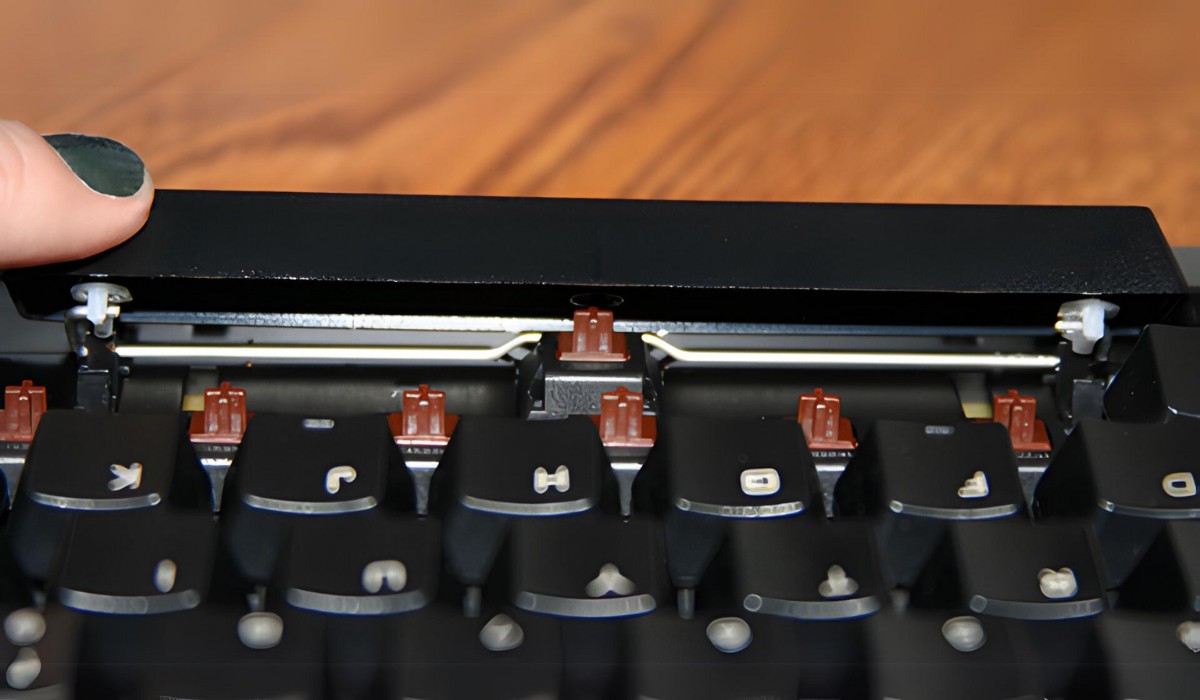Introduction
Welcome to the world of mechanical keyboards, where the tactile feedback and satisfying click-clack sounds elevate the typing experience. However, over time, these keyboards can become less responsive and noisier due to friction and wear. This is where the art of lubrication comes into play.
Lubricating a mechanical keyboard involves applying a thin layer of lubricant to the moving parts, such as the switches and stabilizers, to reduce friction and dampen the noise. This not only restores the smoothness of the key presses but also minimizes the distracting clatter, making your typing sessions more enjoyable for both you and those around you.
Whether you are a professional writer, a programmer, or simply someone who spends a significant amount of time typing, maintaining your mechanical keyboard is essential for optimal performance. By learning how to lubricate your keyboard properly, you can extend its lifespan and ensure a consistently pleasant typing experience.
In this comprehensive guide, we will delve into the reasons why lubricating a mechanical keyboard is important, the tools and materials needed for the task, and a step-by-step tutorial to help you master the art of keyboard lubrication. Additionally, we will provide valuable tips for maintaining a smooth and quiet keyboard, allowing you to maximize the benefits of this maintenance procedure.
So, grab your keyboard, roll up your sleeves, and let’s embark on this journey to revitalize and maintain your mechanical keyboard for a smoother, quieter, and more satisfying typing experience.
Why Lubricating a Mechanical Keyboard is Important
Lubricating a mechanical keyboard is crucial for several reasons. Firstly, over time, the switches and stabilizers in a keyboard can accumulate dust and debris, leading to increased friction and a decline in overall performance. Applying lubricant helps to mitigate this issue by reducing friction between the moving parts, thereby restoring the smoothness of key presses and ensuring consistent tactile feedback.
Moreover, lubrication significantly contributes to noise reduction. Mechanical keyboards are revered for their tactile feedback, but the accompanying clatter can be disruptive, especially in shared workspaces or quiet environments. By lubricating the switches and stabilizers, the excessive noise generated during typing can be minimized, creating a more pleasant and peaceful typing experience.
Furthermore, regular lubrication can prolong the lifespan of a mechanical keyboard. By maintaining the smooth operation of the switches and stabilizers, the need for excessive force during typing is reduced, thereby minimizing wear and tear on the components. This, in turn, helps to prevent premature switch degradation and ensures that the keyboard remains responsive and enjoyable to use for an extended period.
Additionally, lubricating a mechanical keyboard is a proactive measure for preventing potential issues. It serves as a form of preventive maintenance, addressing the underlying causes of reduced performance and excessive noise before they escalate into more significant problems. This proactive approach not only preserves the keyboard’s functionality but also saves time and effort that would otherwise be spent on troubleshooting and addressing avoidable issues.
Lastly, and perhaps most importantly, the act of lubricating a mechanical keyboard allows users to personalize and optimize their typing experience. By fine-tuning the keyboard’s responsiveness and sound profile through lubrication, individuals can tailor their typing experience to suit their preferences, whether it be a smoother key feel, a quieter typing sound, or a combination of both.
Understanding the significance of lubricating a mechanical keyboard underscores the importance of this maintenance procedure in preserving the keyboard’s performance, minimizing noise, extending its lifespan, and providing a customized typing experience tailored to individual preferences.
Tools and Materials Needed
Before embarking on the journey of lubricating a mechanical keyboard, it is essential to gather the necessary tools and materials to ensure a smooth and efficient process. Here is a comprehensive list of items you will need:
- Lubricant: The most critical component for keyboard lubrication is the lubricant itself. It is recommended to use a high-quality, non-conductive lubricant specifically designed for mechanical keyboards. Popular options include silicone grease or oil-based lubricants, which provide excellent friction reduction and noise dampening properties.
- Keycap Puller: A keycap puller is essential for removing the keycaps from the keyboard. This tool allows for easy and safe extraction of the keycaps without causing damage to the switches or keycap stems.
- Brush or Compressed Air: Dust and debris can accumulate inside the keyboard, affecting its performance. A small brush or compressed air can be used to gently clean the keyboard and remove any foreign particles before applying the lubricant.
- Tweezers: Tweezers are useful for handling small components, such as stabilizers and springs, during the lubrication process. They provide precision and control when applying lubricant to specific areas of the switches and stabilizers.
- Microfiber Cloth: A soft, lint-free microfiber cloth is ideal for wiping down the keyboard and removing any excess lubricant. It helps ensure a clean and polished finish after the lubrication process.
- Isopropyl Alcohol: Isopropyl alcohol can be used to clean the keycaps and keyboard housing, removing any grease, dirt, or residues that may affect the application of the lubricant.
- Container or Tray: Having a container or tray to organize and store the keycaps and small components during the lubrication process can help prevent loss or misplacement of crucial parts.
By ensuring that you have these tools and materials at your disposal, you can proceed with confidence, knowing that you have everything needed to effectively lubricate your mechanical keyboard and maintain its optimal performance.
Step-By-Step Guide to Lubricating a Mechanical Keyboard
Lubricating a mechanical keyboard requires a systematic approach to ensure thorough and effective application of the lubricant. Follow these step-by-step instructions to successfully lubricate your keyboard:
- Prepare the Work Area: Find a clean and well-lit workspace to perform the lubrication process. Ensure that you have all the necessary tools and materials within reach.
- Remove the Keycaps: Use the keycap puller to gently remove the keycaps from the keyboard. Place the keycaps in a container or tray to keep them organized and prevent any loss of components.
- Clean the Keyboard: Use a brush or compressed air to remove any dust and debris from the keyboard. Wipe the keyboard housing with a microfiber cloth dampened with isopropyl alcohol to ensure a clean surface for lubrication.
- Apply Lubricant to Stabilizers: If your keyboard has stabilizers, apply a small amount of lubricant to the contact points and wires of each stabilizer. Use tweezers for precision and ensure even distribution of the lubricant.
- Lubricate the Switches: Apply a thin layer of lubricant to the moving parts of each switch. This can be done by carefully applying the lubricant to the slider and housing of the switch. Exercise caution to avoid over-lubrication, as excessive lubricant can affect the switch’s performance.
- Reassemble the Keyboard: Once the switches and stabilizers are lubricated, reassemble the keyboard by reattaching the keycaps. Ensure that each keycap is securely in place and that the keyboard is free from any excess lubricant.
- Test the Keyboard: Test the keyboard to ensure that the key presses are smooth and that the noise level has been reduced. Take note of any keys that may require additional lubrication or adjustments.
- Final Check and Adjustment: Conduct a final check to verify the overall performance of the keyboard. Make any necessary adjustments or touch-ups to achieve the desired typing experience.
Following these step-by-step instructions will help you navigate the process of lubricating your mechanical keyboard with confidence and precision, resulting in a smoother, quieter, and more enjoyable typing experience.
Tips for Maintaining a Smooth and Quiet Keyboard
Once you have successfully lubricated your mechanical keyboard, it is essential to adopt practices that will help preserve its smooth operation and minimize noise over time. Here are some valuable tips for maintaining a smooth and quiet keyboard:
- Regular Cleaning: Dust and debris can accumulate within the keyboard, affecting its performance and sound. Regularly clean the keyboard using a brush or compressed air to remove any foreign particles that may hinder smooth key presses and contribute to increased noise.
- Monitor Lubrication: Periodically monitor the lubrication on your keyboard. Over time, the lubricant may wear off or require reapplication, especially in high-usage areas. Touch up the lubrication as needed to maintain consistent smoothness and noise reduction.
- Use High-Quality Lubricants: Invest in high-quality, durable lubricants specifically designed for mechanical keyboards. Quality lubricants provide long-lasting performance, reducing the frequency of reapplication and ensuring optimal keyboard operation.
- Adjust Stabilizers: If your keyboard has stabilizers, periodically check and adjust them to maintain consistent key stability and reduce any potential rattle or noise caused by loose stabilizers. Properly lubricate the stabilizers during maintenance to ensure smooth and quiet key presses.
- Customize Typing Experience: Explore different lubricants and application techniques to customize the typing experience according to your preferences. Whether you prefer a smoother key feel or a quieter typing sound, experimenting with lubrication can help tailor the keyboard’s performance to your liking.
- Monitor Environmental Factors: Be mindful of environmental factors that can impact your keyboard, such as humidity and temperature. Extreme conditions can affect the performance of the switches and lubricants. Keep your keyboard in a controlled environment to maintain consistent performance.
- Seek Professional Assistance: If you encounter persistent issues with your keyboard’s smoothness or noise level, consider seeking assistance from professional keyboard technicians or enthusiasts who can provide expert guidance and maintenance services.
By incorporating these tips into your keyboard maintenance routine, you can prolong the smooth and quiet operation of your mechanical keyboard, ensuring a pleasant typing experience for an extended period.
Conclusion
Embarking on the journey of lubricating a mechanical keyboard not only restores its smoothness and reduces noise but also allows for a personalized typing experience tailored to individual preferences. By understanding the importance of lubrication and following a systematic approach to maintenance, you can ensure that your keyboard remains a reliable and enjoyable tool for your daily tasks.
Remember, the key to maintaining a smooth and quiet keyboard lies in regular care and attention. By incorporating the tips provided in this guide, such as regular cleaning, monitoring lubrication, and customizing the typing experience, you can preserve the optimal performance of your mechanical keyboard for years to come.
As you continue to explore the world of mechanical keyboards, take pride in the knowledge that you possess the skills to maintain and optimize your keyboard for a superior typing experience. Whether you are a writer, a programmer, or an avid typist, a well-maintained mechanical keyboard can elevate your productivity and enjoyment of the typing process.
So, embrace the art of keyboard maintenance, experiment with different lubricants, and fine-tune your keyboard to perfection. With dedication and care, your mechanical keyboard will continue to serve as a reliable and satisfying companion throughout your typing endeavors.







